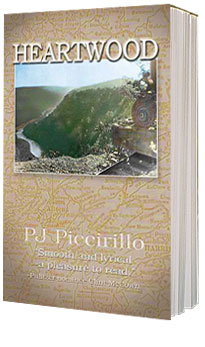Heartwood | Author's Notes
Trees, Landscapes And Legends--But No Literature
Between Penn’s arrival and modern efforts by politicians and out-of-town developers to leverage the northern tier in the name of experiential tourism initiatives that promise economic salvation for locals who in large part aren’t looking to be saved, hardy remnants of the otherwise transient pioneers, many of whom love this land and it’s storied past, have hung on and prospered in their own ways. They’ve developed a manner of living distinct, and in many cases envied. Interpreting their rich heritage, as un-chronicled as the region is overlooked, is a big part of Heartwood.
Against the grain, so to speak, some features of the tier’s culture have in themselves attracted widespread attention, giving growth to grassroots events such as the national Woodsmen’s Show at Cherry Springs State Park, and the internationally attended Ridgway Chainsaw Carvers Rendezvous, which draws tens of thousands each February to a town of 4,000, an event featured so far by CBS, ESPN, The Washington Post, and the AP.
As has been done in classic fashion across regions elsewhere, other authors, too, are attempting to capture the spirit of the Allegheny Plateau’s people and places. Why not? The northern tier has everything a regional literature is made of--social history, ties to the land, a love/hate relationship with extracting its resources, breathtaking landscapes, religious history, diverse ethnicity. In short, lots to make sense of. Yet, though one can find worthy works, Allegheny writers are not recognized as are, say, New England writers, southern Appalachian writers, Kentucky writers.
For many reasons, this stretch of forestland, which in every sense is Appalachia--geographic, political, social--never gave rise to a canonized literary tradition. Foremost among those reasons is that though the Allegheny Plateau is smack in the middle of the populous northeast, this rugged and remote locale’s human history is short, scattered, and transient. It’s a place where buffalo really did roam, and elk still do. The tier essentially missed westward expansion, screened by mountain ridges at its southeastern front, with passable gaps mainly at the branches of the Susquehanna.
The early settlers who did enter the dark, nearly impenetrable forests atop this sharply fissured terrain, a place they referred to as the “Shades of Death,” found no natural east-west routes to follow, so dependent is passable transportation on the longitudinally arranged creek-cut canyons. Accounts abound of many would-be settlers eventually landing in New York, or back where they came from. To this day, a glance at a map shows transportation routes between I-80 to the south, and Route 6 to the north, running at cross purposes to manifest destiny. Those who did stay found life hard, and they produced tough, independent progeny viewed by outsiders today as pioneers themselves.
Hence, our land remains sparsely settled and holds at best only a few generations of roots, unlike regions steeped in lineage, and therefore literatures. Farming is one occupation that lasts the generations and so is at the root of many regional identities. But the farms of this landscape, most originally established in one of three ways--as self-sustaining farmsteads; to supply the local wave of early logging operations; or as side operations for wealthy barons of other industries--were limited in breadth by narrow valley walls. Those built boldly on the higher plateauland yielded more stones than crops.
Some farms have, indeed, survived the years, but there exist very few farming communities among the crumbling coal towns and remnant red brick industrial burgs that sustain descendants of relatively recently arrived, early-twentieth century European immigrants who worked as hands in industries related to the timber, coal and oil they were hired to exploit. Instead, there exist ghostfields where once stood company houses and sawmills, and where typically still stand, somehow, hotel-taverns that cater to weekenders and the resilient locals.
So, the paradox: For these very reasons, there exists no literature of the Allegheny Plateau, and these are the very features that gives us all we need for a literature of the Allegheny Plateau.

